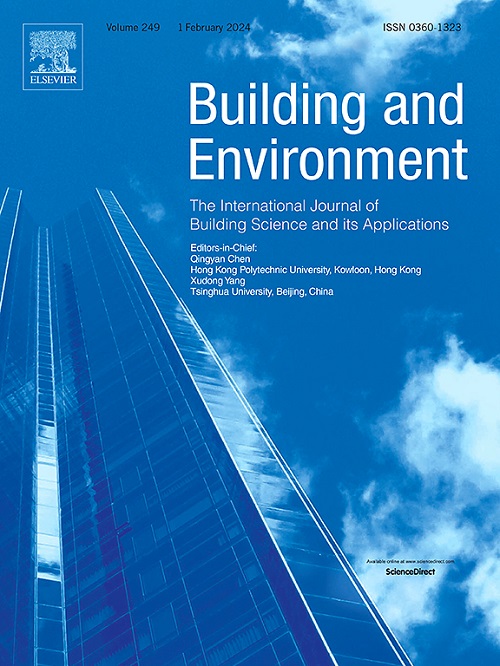Uncertainty quantification: For an IAQ and energy performance assessment method for smart ventilation strategies
IF 7.1
1区 工程技术
Q1 CONSTRUCTION & BUILDING TECHNOLOGY
引用次数: 0
Abstract
In new low-energy buildings or buildings after thermal refurbishment, the envelope high airtightness could have an impact on air renewal and could decrease the indoor air quality (IAQ). In this context smart-ventilation systems with variable airflows could play a role in providing better IAQ without compromising the energy performance.
However, smart-ventilation strategies are quite recent, and their benefits need to be clearly quantified. This article, proposes to quantify the uncertainty of a recent multi-criteria performance assessment method, using global RBD-FAST sensitivity analysis. The impact of the pollutant emissions scenarios, model input parameters and ventilation strategies is assessed.
Five ventilation systems were studied: two constant airflow, one humidity-controlled and two humidity/CO2 controlled, applied on a French low-energy house. 2500 simulations were performed to calculate 504 sensitivity indices across 12 input variables and 9 output performance indicators. The sensitivity analysis shows that occupant bio-effluent, formaldehyde and PM2.5 emissions rates are responsible for 11 %–87 % of the uncertainty for the IAQ performance indicators. The PM2.5 deposition velocity parameter is responsible for 50 % of the uncertainty on the PM2.5 indicator, which was an unknown impact. In addition, the benefits of humidity-controlled ventilation were highlighted regarding energy performance, with, in average, 20 % lower heat-loss compared to constant airflow ventilation. Moreover, smart-ventilation provides clear IAQ benefits without drastically increasing the energy demand. This work demonstrates the potential of the proposed evaluation method for ventilation performance assessment.
不确定性量化:用于智能通风策略的 IAQ 和能效评估方法
在新建的低能耗建筑或经过热翻新的建筑中,围护结构的高气密性可能会影响空气的更新,并降低室内空气质量(IAQ)。在这种情况下,具有可变气流的智能通风系统可以在不影响能源性能的前提下提供更好的室内空气质量。然而,智能通风策略是最近才出现的,其好处需要明确量化。本文建议采用全局 RBD-FAST 敏感性分析方法,量化最新多标准性能评估方法的不确定性。研究了五种通风系统:两种恒定气流系统、一种湿度控制和两种湿度/二氧化碳控制,应用于法国的低能耗住宅。对 12 个输入变量和 9 个输出性能指标进行了 2500 次模拟,计算出 504 个敏感性指数。敏感性分析表明,室内空气质量性能指标的不确定性中,11%-87%与居住者的生物废水、甲醛和 PM2.5 排放率有关。PM2.5 沉积速度参数造成了 PM2.5 指标不确定性的 50%,这是一个未知影响。此外,湿度控制通风在能源性能方面的优势也得到了强调,与恒定气流通风相比,热损失平均降低了 20%。此外,智能通风在不大幅增加能源需求的情况下,还能带来明显的室内空气质量优势。这项工作证明了所提出的通风性能评估方法的潜力。
本文章由计算机程序翻译,如有差异,请以英文原文为准。
求助全文
约1分钟内获得全文
求助全文
来源期刊

Building and Environment
工程技术-工程:环境
CiteScore
12.50
自引率
23.00%
发文量
1130
审稿时长
27 days
期刊介绍:
Building and Environment, an international journal, is dedicated to publishing original research papers, comprehensive review articles, editorials, and short communications in the fields of building science, urban physics, and human interaction with the indoor and outdoor built environment. The journal emphasizes innovative technologies and knowledge verified through measurement and analysis. It covers environmental performance across various spatial scales, from cities and communities to buildings and systems, fostering collaborative, multi-disciplinary research with broader significance.
 求助内容:
求助内容: 应助结果提醒方式:
应助结果提醒方式:


